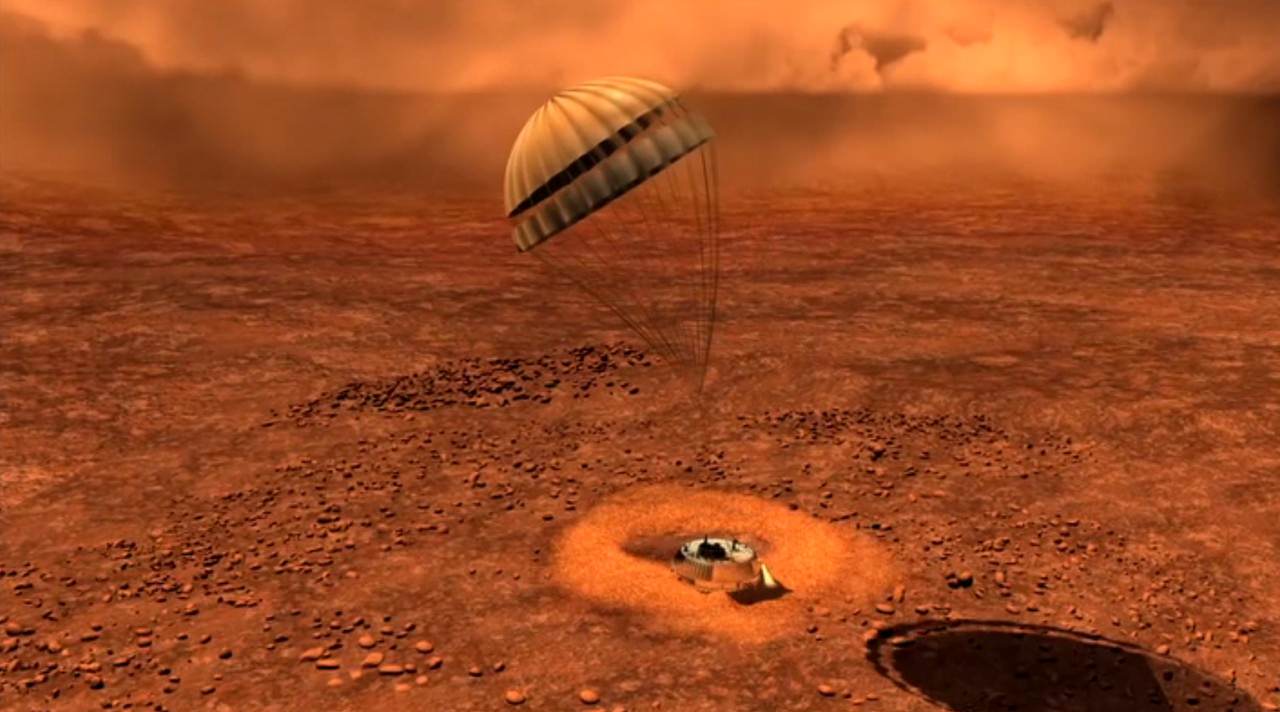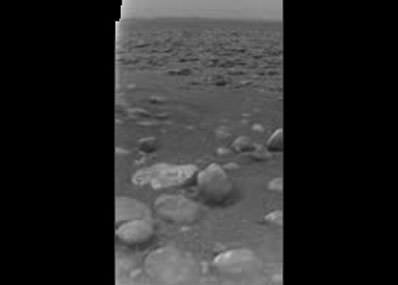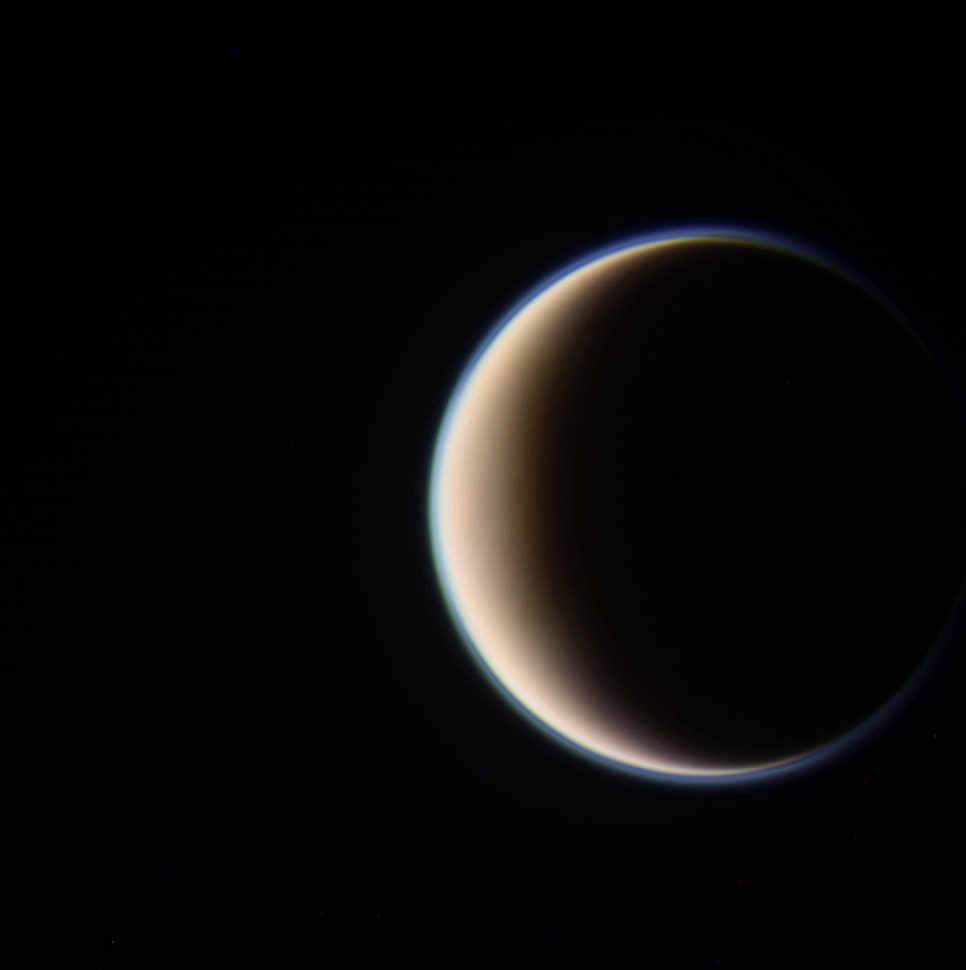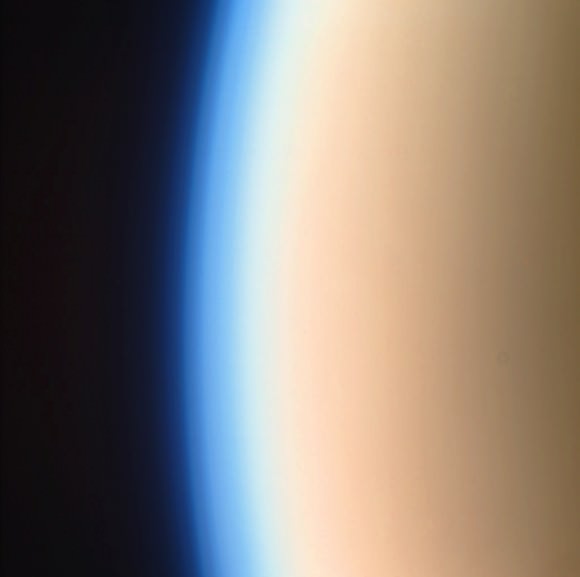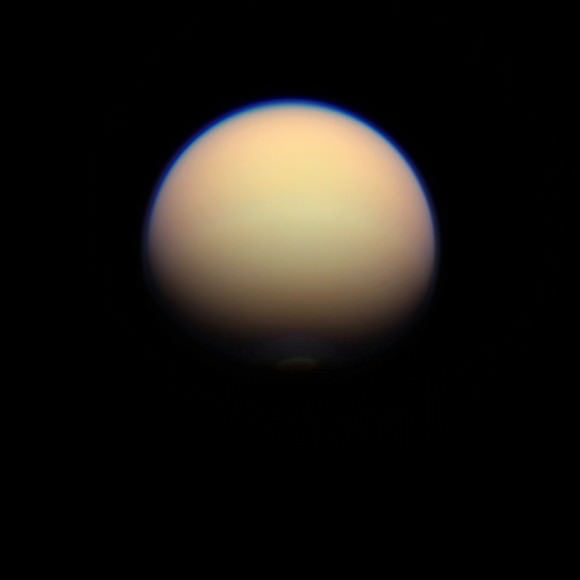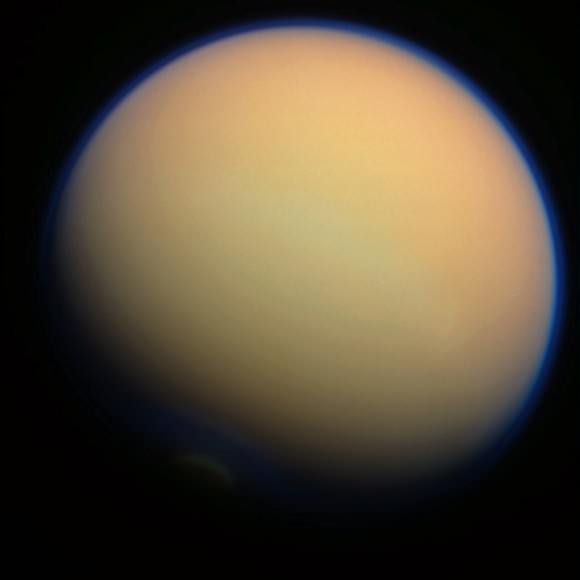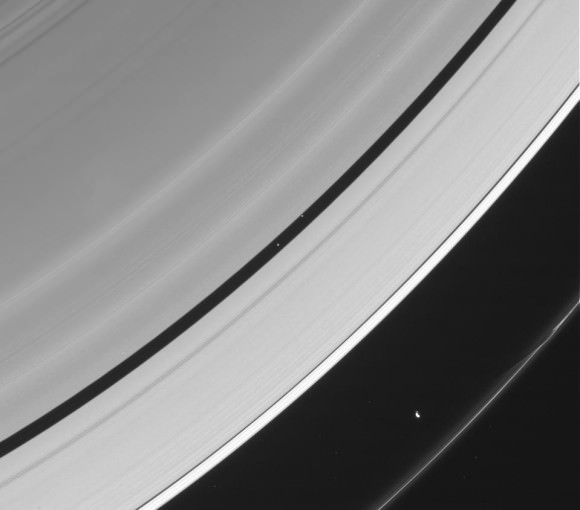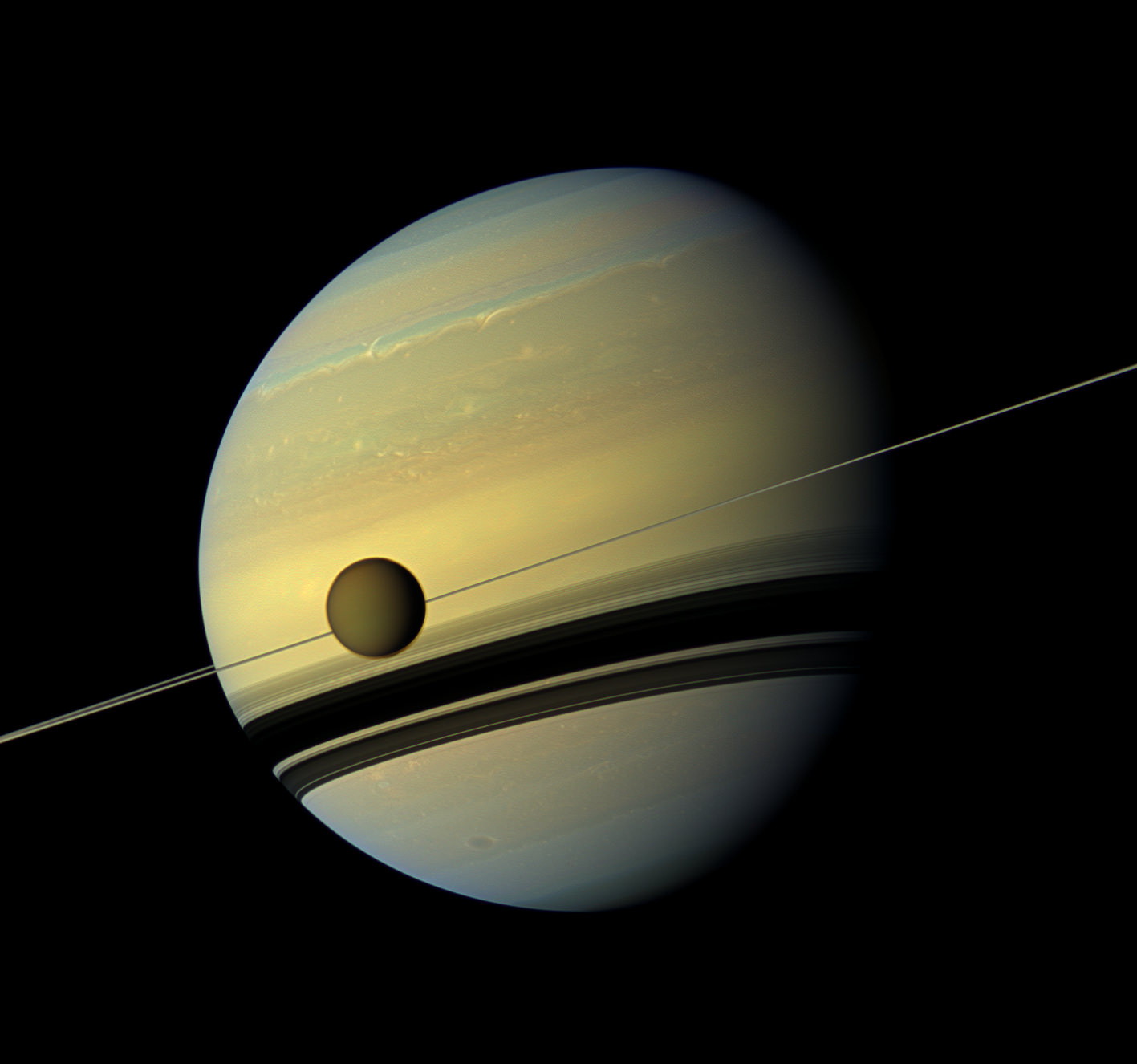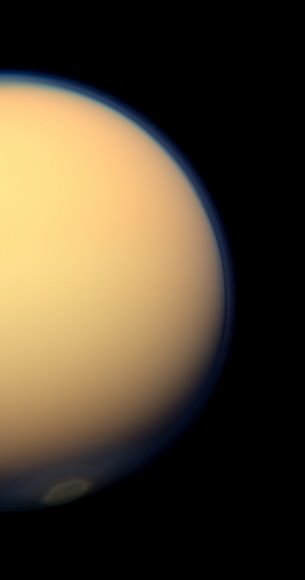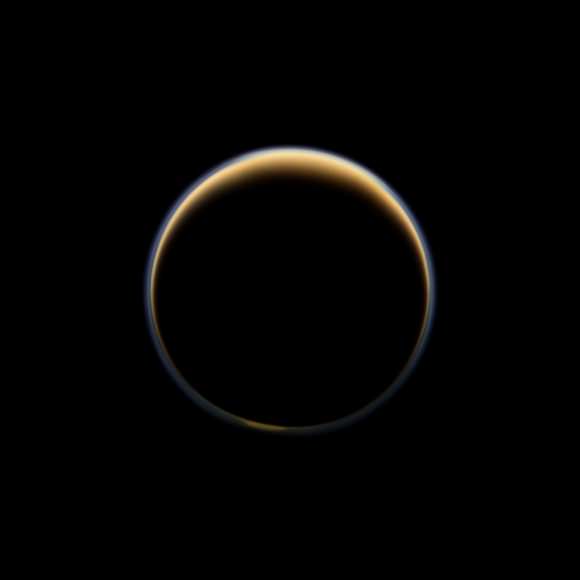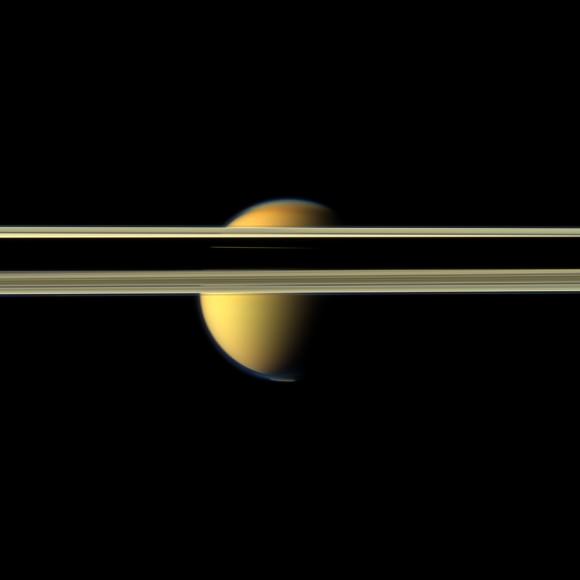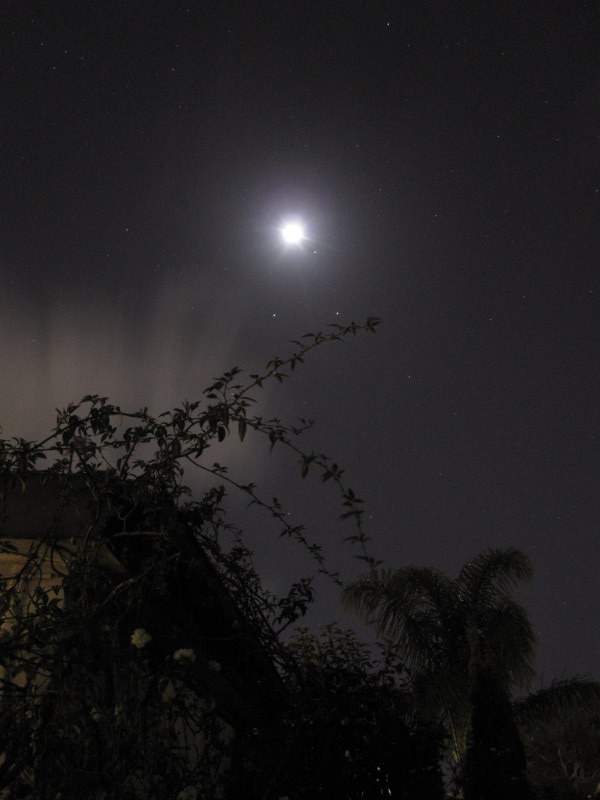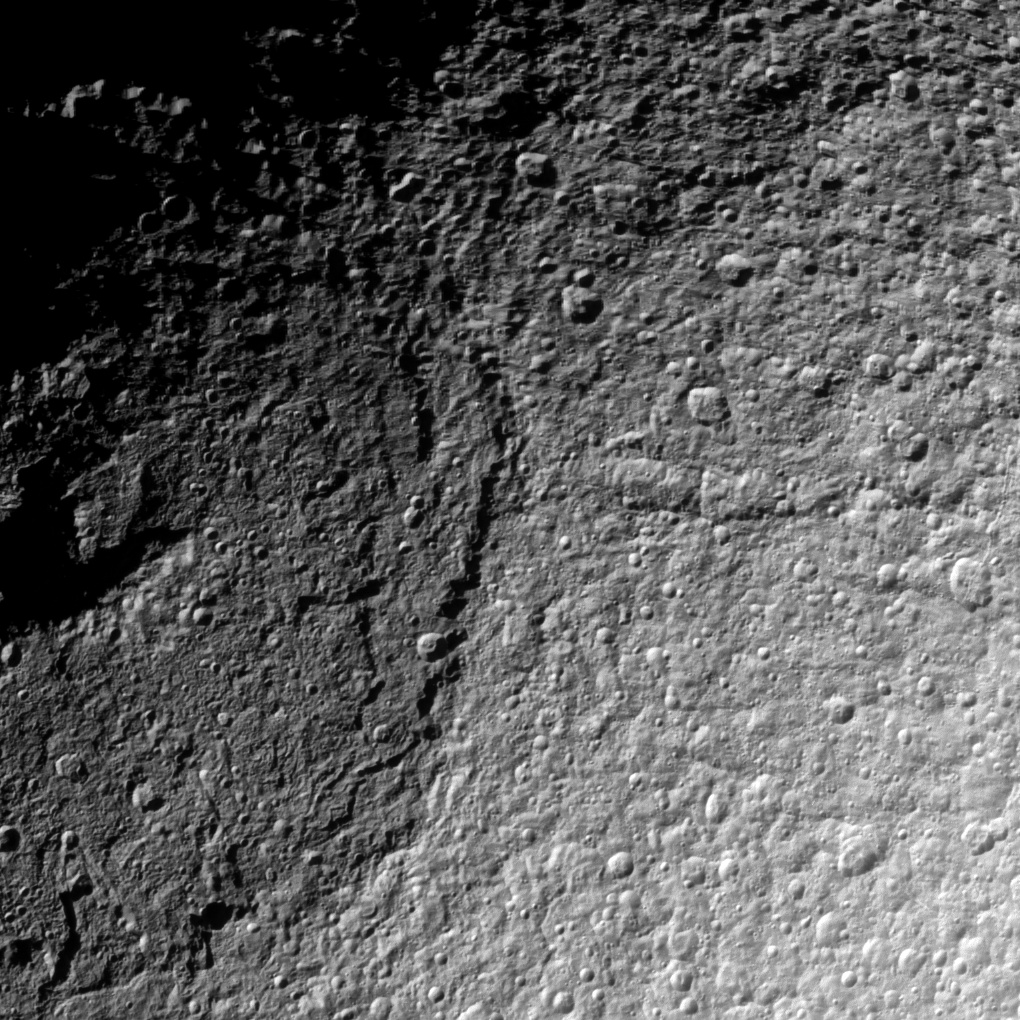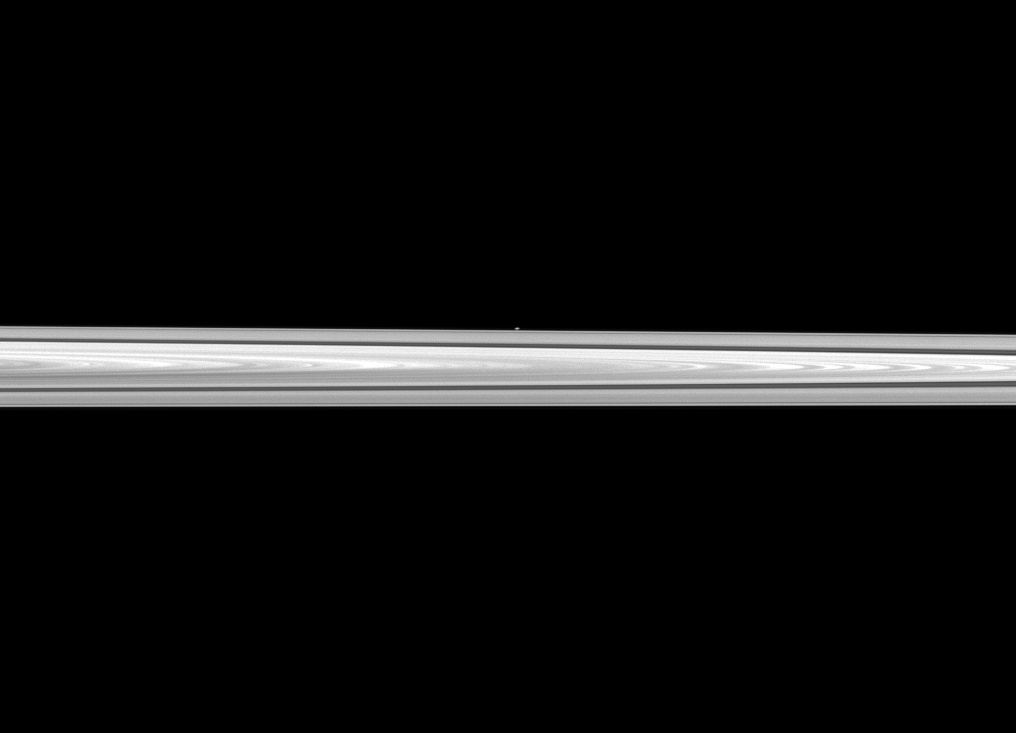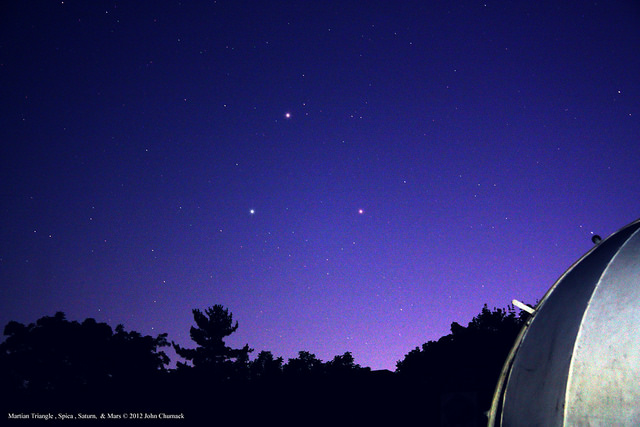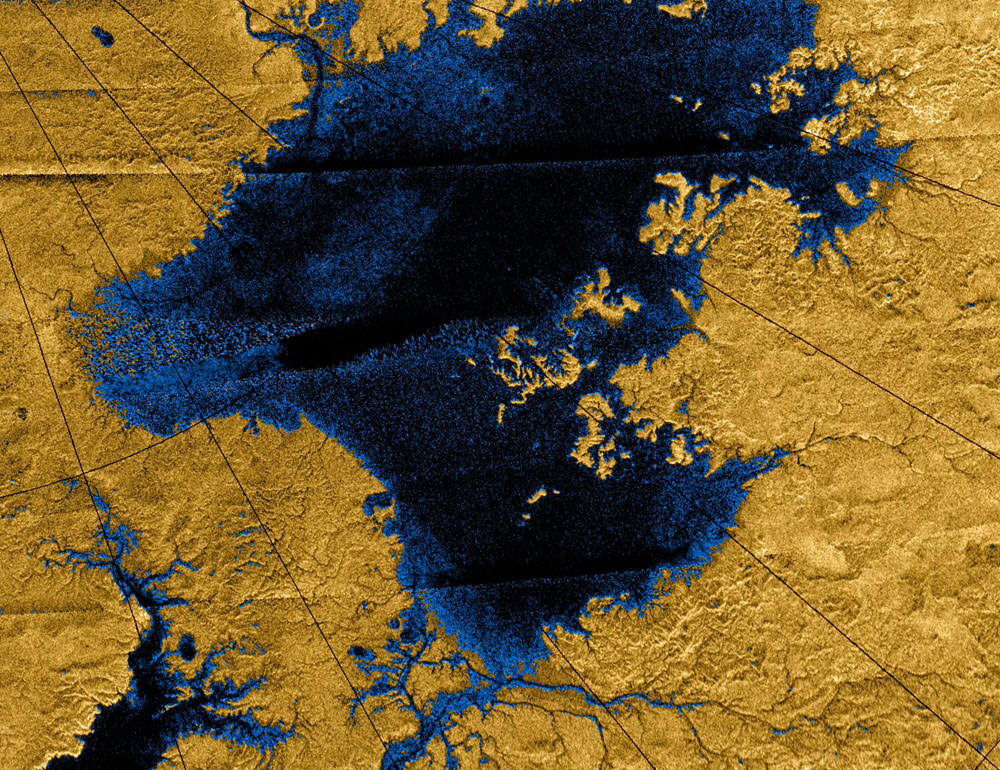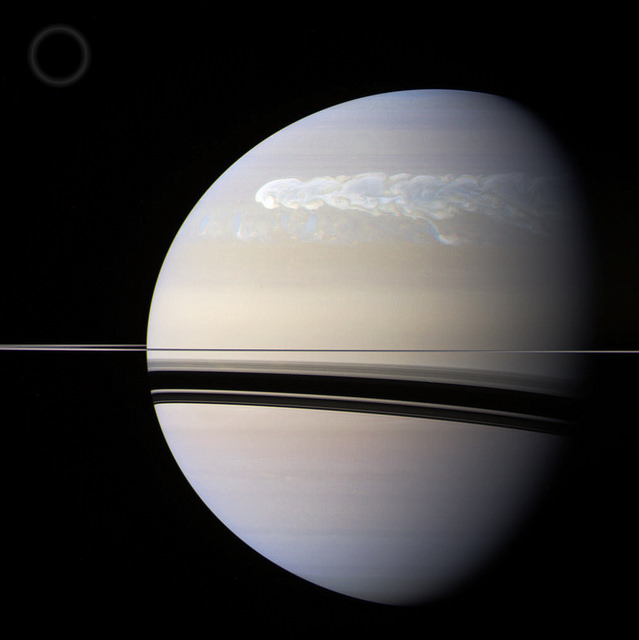Artist concept of the Huygens probe landing on the surface of Titan. Credit: ESA
Even though the Huygens probe landed on Titan back in 2005 and transmitted data for only about 90 minutes after touchdown, scientists are still able to eke information out about Titan from the mission, squeezing all they can from the data. The latest information comes from reconstructing the way the probe landed, and an international group of scientists say the probe “bounced, slid and wobbled” after touching down on Saturn’s moon, which provides insight into the nature of the Titan’s surface.
“A spike in the acceleration data suggests that during the first wobble, the probe likely encountered a pebble protruding by around 2 cm from the surface of Titan, and may have even pushed it into the ground, suggesting that the surface had a consistency of soft, damp sand,” describes Dr. Stefan Schröder of the Max Planck Institute for Solar System Research, lead author of a paper recently published in Planetary and Space Science.
An animation of the landing is below.
Schröder and his team were able to reconstruct the landing by analyzing data from different instruments that were active during the impact, and in particular they looked for changes in the acceleration experienced by the probe.
The instrument data were compared with results from computer simulations and a drop test using a model of Huygens designed to replicate the landing.
The scientists think that Huygens landed in something similar to a flood plain on Earth, but that it was dry at the time. The analysis reveals that, on first contact with Titan’s surface, Huygens dug a hole 12 cm deep, before bouncing out onto a flat surface.
The probe, tilted by about 10 degrees in the direction of motion, then slid 30–40 cm across the surface.
It slowed due to friction with the surface and, upon coming to its final resting place, wobbled back and forth five times. Motion subsided about 10 seconds after touchdown.
Earlier studies of data from Huygens determined the surface of Titan to be quite soft. The new study goes one step farther, the team said, to demonstrate that if something put little pressure on the surface, the surface was hard, but if an object put more pressure on the surface, it sank in significantly.
“It is like snow that has been frozen on top,” said Erich Karkoschka, a co-author at the University of Arizona, Tucson. “If you walk carefully, you can walk as on a solid surface, but if you step on the snow a little too hard, you break in very deeply.”
Had the probe impacted a wet, mud-like substance, its instruments would have recorded a “splat” with no further indication of bouncing or sliding. The surface must have therefore been soft enough to allow the probe to make a sizable depression, but hard enough to support Huygens rocking back and forth.
This raw image was returned by the Descent Imager/Spectral Radiometer camera onboard the European Space Agency’s Huygens probe after the probe descended through the atmosphere of Titan. It shows the surface of Titan with ice blocks strewn around. Credit: ESA/NASA/University of Arizona
“We also see in the Huygens landing data evidence of a ‘fluffy’ dust-like material – most likely organic aerosols that are known to drizzle out of the Titan atmosphere – being thrown up into the atmosphere and suspended there for around four seconds after the impact,” said Schröder.
Since the dust was easily lifted, it was most likely dry, suggesting that there had not been any rain of liquid ethane or methane for some time prior to the landing.
“You don’t get rain very often on Titan,” said Karkoschka, explaining that heavy downpours of liquid methane may occur decades or centuries apart. “When they do occur, they carve the channels we see in the pictures Huygens recorded as it approached the surface. The top layer at the landing site was completely dry, suggesting it hadn’t rained in a long time,” he added.
Karkoschka said that when Huygens landed, its downward-shining lamp warmed up the ground and caused methane to evaporate,” Karkoschka explained. “That tells us that just below the surface, the ground probably was wet.”
It has been suggested in earlier studies that the Huygens probe landed near the edge of one of Titan’s hydrocarbon lakes. Several hundred lakes and seas have been observed with the Cassini orbiter’s radar instruments, but with surface temperatures of minus 179 degrees Celsius (minus 290 degrees Fahrenheit), Titan does not have bodies of water. Instead, liquid hydrocarbons in the form of methane and ethane are present on the moon’s surface, with complex carbons making up dunes and other features on the surface.
Source: ESA

